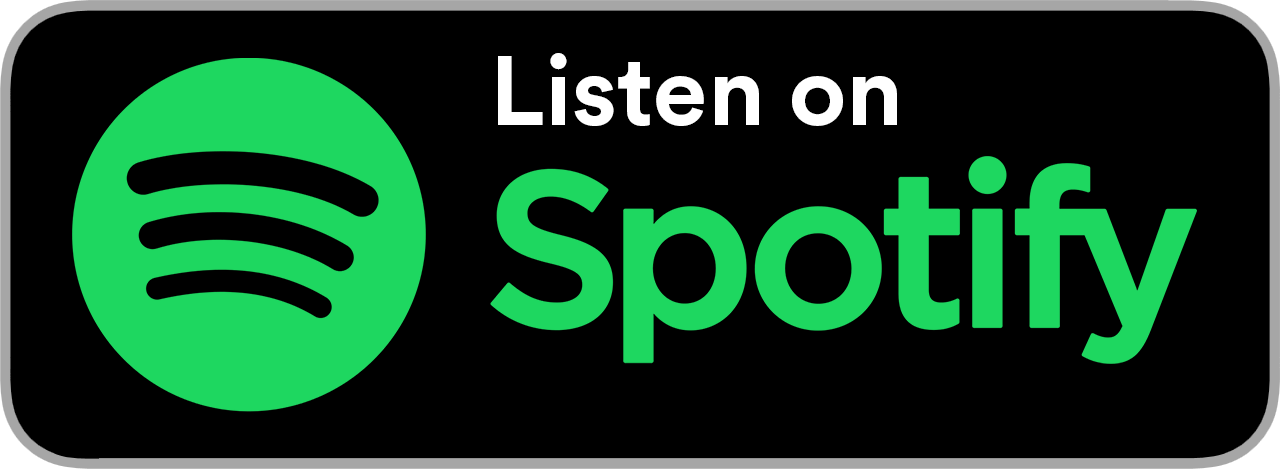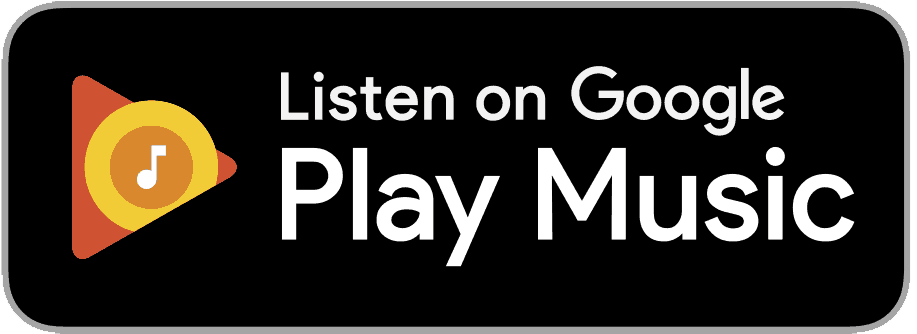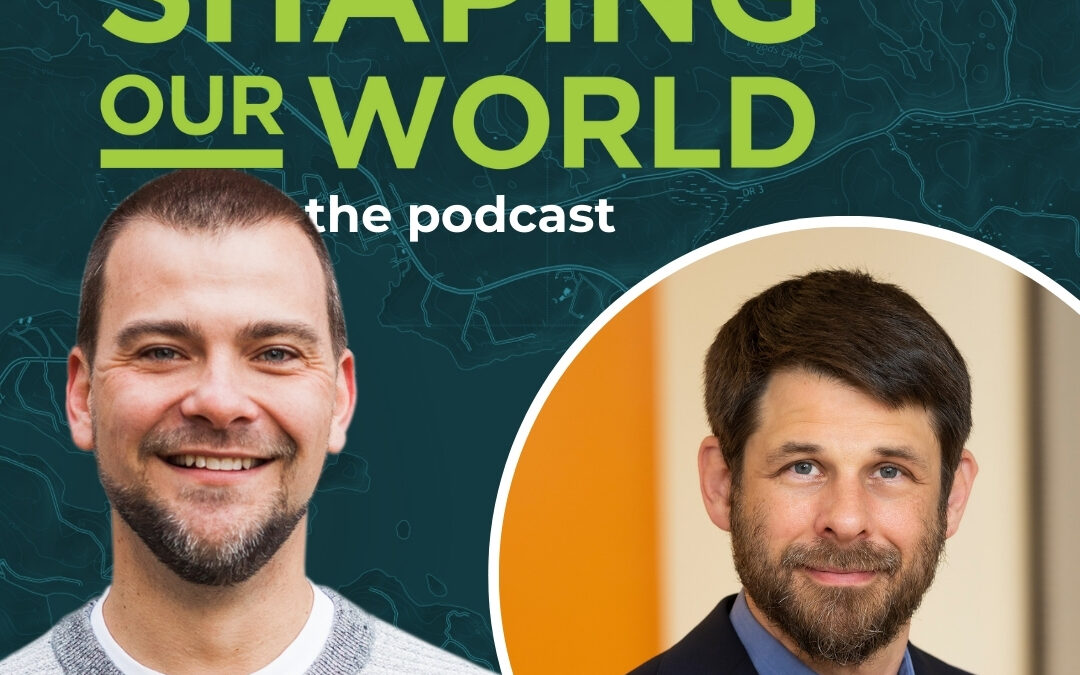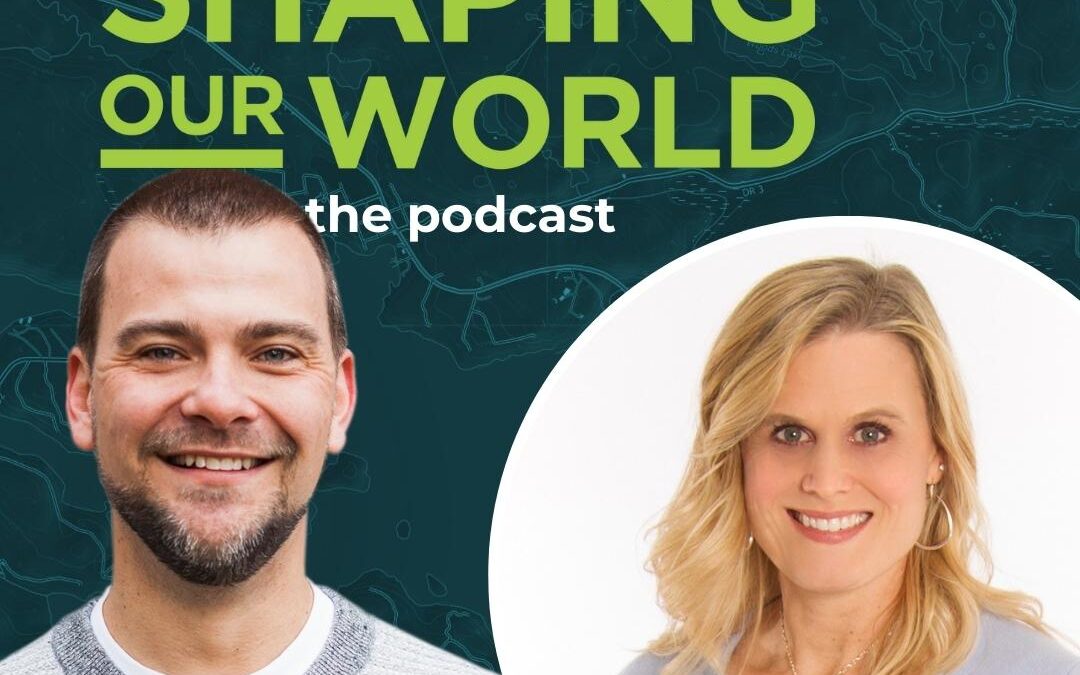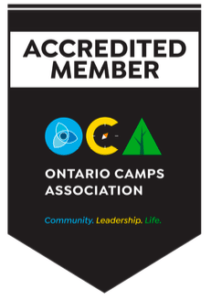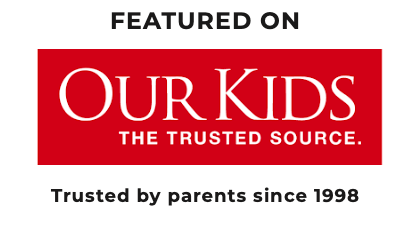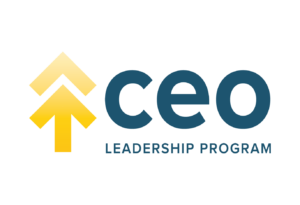[00:00:12.550] – Speaker 1
Well. Hey, I’m Chris Tompkins, and welcome to the Shaping Our World podcast. My goal is to invite you into a conversation that will leave you more confident in understanding and inspiring the young people in your life. Each episode, we talk with leading experts and offer relevant resources to dive deeper into the world of our youth today. Today, we have Charmaine Hammond on the show. Charmaine is a highly sought after keynote and workshop speaker, having presented to more than 4,000 people worldwide. Best selling author and educator who teaches and advocates the importance of developing trust, healthy relationships, and collaboration in the workplace and at home. She was a family mediator for many years, a former registered social worker, and has developed multiple programs for schools, families, and organizations that work with family. With all of her experience, we can’t wait to hear from her today. Charmaine, it’s great to have you.
[00:01:19.860] – Speaker 2
Thanks. I’m really excited for the conversation today.
[00:01:23.050] – Speaker 1
Yeah, me too. Me too. So our podcast is called Shaping Our World. So we have a few questions around that. So what shaping our world? When you were a young person, child, teenager, whatever kind of sticks out in your mind?
[00:01:35.940] – Speaker 2
Oh, there’s so many that stick out in my mind, but I’m going to mention one, and that’s my grade nine English teacher. When I was growing up, I was painfully shy and going to high school was actually quite terrifying for me. And my grade nine teacher, Ms. Ersticatus, we got to call her Ursti for short. She really helped me come out of my shell and start to not only be more confident, but really get in touch with what some of my passions and what I thought my purpose would be. I think really, she helped shape my entire career and what I love to do on my passion projects as well.
[00:02:15.570] – Speaker 1
That’s amazing. I love that. And people who listen to the show know we’ve talked so much about the role of positive adults and young people’s lives and not just their development in the moment, but like, you’re saying, like, future careers and stuff. So I love that you can even pinpoint back when you were young, someone who kind of spoke into your life and shaped a lot of who you are today. That’s awesome.
[00:02:38.640] – Speaker 2
She did. And I just have to add, I had the great experience of, I think it was about seven or eight years ago, I did a little project for my own personal development called Letters to My Mentors, and I wrote all of those adults in my life that impacted me in some way. And many of them, I actually didn’t recognize the impact until I was in my 50s recently. And I did this Letters to Mentors and Misers decades, of course, was one of the mentors that I sent a letter to. And then we had a reunion just before Coat and got together in person. And that was like a highlight of my entire adult life was just getting to reconnect with her many years later as an adult and just thank her in person.
[00:03:24.400] – Speaker 1
That’s amazing. And it’s so cool. And we could digress for so long here charmaine about this. Maybe we’ll circle back to it and some practical tips where I can hear a bit more about the letters to mentors. But I had the same experience being able to talk to my great ten and eleven basketball coach who made a big difference in my life and go back, and I just remember even seeing in his eyes, like, being proud of me and who I become. People who get involved in young people’s lives, they do it because they want to make a difference. And so what a cool tool that you utilize to not just to kind of feedback in that, but I’m digressing a little bit. Tell us a little bit about what’s shaping our world today.
[00:04:08.250] – Speaker 2
What’s shaping my world today? Well, it’s been interesting times, hasn’t it? Living navigating through COVID. Some of the things that are shaping my world today are getting back into reading print books, not just reading things online. I’m finding that as I devour content and get connected with my own personal and professional development, I’m loving the impact that reading books is having on my life. And the other piece that’s really shaping my life is getting involved in projects, impact type projects that involve youth and families.
[00:04:44.250] – Speaker 1
Oh, wow. Can you just give us a few ideas of what those are?
[00:04:48.700] – Speaker 2
Sure. I actually became executive producer of an animated movie about five years ago, and it’s just starting to yes, it’s super exciting. And it’s a movie created to be a conversation starter about mental health. It’s called Back Home Again, and it’s just going through the film festival circuits right now and wells be out for the public later this fall. But that has been an incredible experience, as well as working with youth in the early stages of this project to get their feedback and to help them help us shape the project.
[00:05:23.590] – Speaker 1
Oh, wow. Okay, so what are you doing now that’s shaping the world of teens and youth? You’ve mentioned the film specifically, but talk about your work. What do you do professionally?
[00:05:34.620] – Speaker 2
Yes, as a speaker and trainer and consultant, I work with educators and also work with different organizations such as the Expert Talk and Deliver training programs and workshops on resilience and conflict resolution in the family and creating collaborative classrooms in the school system. And I love working with those programs and the youths that I’ve got to meet across Canada. It’s been incredible.
[00:06:01.770] – Speaker 1
Yeah, that’s amazing. I know you have a rich history of working on relational issues, particularly in families, so we’re going to get into that a little bit. But before we do, can we go back to the film for a second? When you said that, I was so intrigued, I’m like you talk to young people about mental health and where things are at today in order to make this. What are some things that really jumped out to you that you heard them talk about that maybe not just shaped where the film went, but just your understanding of where kids are today?
[00:06:35.130] – Speaker 2
One of the biggest things we’ve heard, and we’ve heard this when we’ve done some screenings, we’ve actually had youth involved in the screenings and in some cases even in the panel conversations. And one of the pieces that I hear over and over again from youth as they talk about mental health is the importance of connection. And what’s really interesting for me in that is that when we were doing a lot of research for the film and for my own work and resilience, a lot of the studies show that connection is one of the most critical foundations to resilience, not only in families, but in communities. And it was really empowering to hear youth saying how important connection was and then to learn how they perceived connection and what was important to them about Connection. Because, of course, we look at it through our adult lens, and having you tell us what their lens was was very impactful.
[00:07:28.710] – Speaker 1
Wells so what did they say? Because this is already a great interview. You’re getting two steps ahead of me, because I was going to say wells how did they define connections? Because it’s easy for us as adults to say, well, when I was a kid, I had six friends in the neighborhood and we rode bikes together and what the connections look like. And I’m even thinking, as we’re recording this, we’re emerging from the pandemic, not as quickly, I think, as many of us hoped and would like, but we see this at camp, right. A whole bunch of young people that have not had the same kind of social interactions because of how school went and extracurricular sports. And for many months in the pandemic, it was just them and their family. So how are young people kind of defining connections now?
[00:08:16.830] – Speaker 2
I’ve talked to youth that have told me connection, for some, might be having that constant ability to check in with each other, and that might be through social platforms, social media platforms, through text. But also we also heard a lot of comments and conversations from youth around the importance of meaningful friendships and connection through activities such as sports and camps and extracurricular activities like the drama club or music. And then we also heard what was so exciting for me was a lot of youth that I’ve talked to over the last five years have said things like, I want to be involved in something that makes a difference.
[00:08:56.160] – Speaker 1
Wow. Yeah.
[00:08:56.830] – Speaker 2
And that was really interesting. So connection was also about opportunities to do something that brings their passion or purpose into play or to do something that makes a difference in the world.
[00:09:08.760] – Speaker 1
Yeah, so what do you see as some of the barriers or issues that are impacting young people’s ability to kind of make those connections?
[00:09:18.990] – Speaker 2
What a great question. Certainly during Covet, the obvious answer was that there were so many limitations on how we could connect. And youth are resilient, they’re innovative, they’re creative, they were creating their own ways to stay connected. I remember talking to one youth who said, and I think they were grade seven, said, we used to go to the movies every week as a group of friends and now we have virtual movie nights. So they just got creative and took a strategy that they use in life and figured out what could that look like in this virtual world. So some of the barriers became those restrictions that we all lived with. But some of the other barriers sometimes that youth are dealing with is the differences in how adults, parents, educators, family and youth think. And as a former family mediator, I saw that happen all the time in family conflicts when we have a different set of values or perceptions of how things should be. So sometimes youth and families and parents are trying to navigate this together. How does connection work in a world where parents can feel that their children are safe and where youth can feel that they’re connected?
[00:10:32.250] – Speaker 1
That’s really great. I’m going to transition a bit because that’s a great kind of launching point for us. We’ve got young people who are longing for and recognizing the power of connections. And so many of the connections, like the most preeminent ones, are friends, are really important influences. But the family system itself. And so as you spent time working with young people and in family issues or conflicts, disagreements, what are some of the common issues you’re seeing through your career? And maybe now that many families kind of navigate and deal with, but maybe aren’t kind of the things that are commonly known, what are some of the tensions in those connections in the home?
[00:11:20.140] – Speaker 2
Yes, that is a great question. And many of these tensions and challenges that families wrestle with have been the same for the last 30 years of my career. Well, it might look different in terms of what’s happening in the world. One of the key ones that I see is communication. So the differences in ways parents and caregivers communicate versus children and youth. So that’s one challenge. The second challenge that I see is that issue around trust. When I was a family mediator facilitating family conflicts and the resolution of them, there was always sort of a handful of agenda items that came up in every family conflict and it was communication, trust, responsibility, kind of contribution to the home, like chores and things like that, right? Those are some of the common challenges. But now in the world we live in, there’s a lot of extra challenges that families are dealing with. For example, with trust there’s also technology trust. You know, how do we trust our child that they’re on sites that are safe for them? And how do we navigate that as a family?
[00:12:34.410] – Speaker 1
Yeah. And so we have some of these emerging you talked about values and ways we approach issues that are different. And a lot of that has to do with our generation, how we grew up. There’s also power dynamics in the family and even expanding to a teacher and student or camp counselor. So how do we kind of approach issues around communication when there are different values at play? Like what are some things that, as a parent or as a youth leader that we should be really paying attention to? And communication styles and how values come into the issues that we’re tackling together.
[00:13:19.890] – Speaker 2
That is such a great question around values. And you’re right. We all have these different communication styles and different personality styles and traits, one of the key elements with values. And I even remember this talking to my grandparents when I was young. I remember my granddad getting so passionate about certain things that were important to him. And I later learned that these were really his deeply grounded values, and sometimes they were tough to talk about because his passion was very, very vocal. And then as a young person, I might get defensive about that or sort of almost argue back. And we learned how to have these open conversations where it’s not about proving one value to be right or wrong or better or not as necessary. It’s really about being open, being creative, being curious, and asking a lot of open ended questions. And when parents, camp, counselors educators can model that for young people that open dialogue and asking questions, why do you feel so strongly about that? What’s important to you about that? Those kind of questions help sort of almost create more depth in the conversation. I always think of it like an onion to get to what really matters with people.
[00:14:37.500] – Speaker 2
I think that was also in the Shrek movie, but it’s around peeling those layers to get to the core of what really matters.
[00:14:44.730] – Speaker 1
So do you have some examples of good questions as parents? Because I think that’s educators I know it can be specific to the situation. But I know in mediation and some of the work you’ve done. I’m sure there’s some practical questions that we might be able to hold on to as parents that when we’re ready to speak rather than listen. We can say. Okay. This might be a question or two that we can kind of yuill out to get to that next layer of the onion.
[00:15:13.980] – Speaker 2
You bet. And I call them back pocket scripts. They’re sort of like that little cue.
[00:15:18.150] – Speaker 1
Card that you that’s great back pocket grips.
[00:15:20.930] – Speaker 2
I like that you whip that little recipe card out of your back pocket and it’s got a few things on them. One of them I would say this is probably the most commonly used phrase, but I use it as a question, as a mediator is tell me more about that. Often in a conversation when things get emotional or almost punchy, and what I mean by punchy is the conversation gets edgy. One of the best ways to navigate that is to recognize that there’s a motion there, which usually means either somebody’s not feeling heard this is an important topic that needs more depth and just saying, tell me more about that. The person on the other part of the conversation will share with you what they think you need to hear. So that’s a good one on the back pocket script. The second one is almost like a connection question. Sometimes when we’re in conversations around values or conflicts, we bring up the past a lot. Sometimes what we do is we start arguing the past and we aren’t clear on how the past connects to now. And a great back pocket script for that is help me understand how that five years ago connects to today.
[00:16:35.170] – Speaker 2
And of course, you’ve got to ask it in a way that sounds curious, not judgmental. And then the third question, so that’s a connection question. You’ve got to tell me more about that. The third question is more about what’s important to you about that. I can see that there’s some emotion here. What’s important to you about that? Because that’s where people really get to their values.
[00:17:01.050] – Speaker 1
Yeah, I like that question, particularly like you said, because where we’re kind of maybe missing each other isn’t always on the facts or the details, but the values or maybe even some of the intentions that are coming behind things. And we all know in our relationships there’s always something going on beyond the disagreement that’s a little below the surface. So I really like that. That’s really helpful if those are some kind of positive questions that we can ask. And I love how you said that. The back pocket script, what are some things we should maybe think about avoiding? What are some common mistakes we make in communicating with our kids?
[00:17:47.250] – Speaker 2
The mistakes of our words escape our mouth before we’ve really thought them through. We really do need to think carefully about what we want to say. But often in communication, we mess up. We say something and it doesn’t land right. And if it doesn’t land right, just correct it right there. Just say something like, oh, that didn’t land how I wanted it to come out. Let me try that again. The things that we want to avoid are you messages. You never you always you should have, you could have people will typically respond with a defensive or a justifying response and it just turns into often a confrontation. So avoid the you messages, avoid those generalizations like never and always that people will become defensive about. And the other thing to avoid, and this is so tough but so important is to avoid assumptions. They really take conversations down the wrong way. And as adults we make a lot of assumptions about the kids in our lives and youth make a lot of assumptions about what adults in their life might think or feel. So we’ve got to avoid those assumptions.
[00:18:58.130] – Speaker 1
Yeah, that’s good. Around our staff team here where I work at Muscogen Woods, we have what we call a relational covenant. And one of the four things in the relational covenant is assume the best. Whenever we come into something, we want to start with a disposition of assuming the best in the person’s intention or what happened and we might not have all the information, but let’s start from a position of assuming the best and then work towards that. So those are really, really helpful things. So conflicts come up in families and whether it’s communication or issues that we’re trying to work through, one of the things and I want to kind of link back to you’ve done this film on mental health. I think one of the different differences in generations and I know whenever we talk about generations it’s broad strokes. And I think when I was growing up, I know a lot of young people struggled with mental health when I was younger. But I don’t know if we consciously knew that. I don’t know if I would have known anyone who quote unquote had a panic attack where now some of that’s more frequent.
[00:20:15.340] – Speaker 1
And so I think there is a bit of a difference if I can speak on behalf of my generation, which is always dangerous to do. There’s a bit of a difference in understanding mental health and how to enter into those conversations because that adds another level of dynamic to potential conflicts and disagreements when young people are struggling with mental health issues that maybe we don’t have the words of the language or the understanding to have to be able to kind of put ourselves in their shoes. I think you know what I’m asking and what I’m getting at. That’s a bit of a ramble there. But help us as DAREarts understand mental health stuff and where does that kind of enter into conflict and what can we do to better understand our kids and young people that we work with today?
[00:21:04.110] – Speaker 2
I love that question because we actually live in a time right now and I feel grateful to live in this time right now where mental health is much more at the forefront and it’s actually okay to talk about it and to ask questions about it. Parents can actually use drive time and dinner time to their benefit. You’ve got your children, your youth at this captive moment either in a moving vehicle or around the dinner table. And it’s a great time to just open up dialogue and really use those open ended questions like instead of saying did you have a good day at school? Today, which is a yes or no answer. Maybe a different question could be what was your highlight around school today? Or what are you seeing your student, your peers struggling with at school? So asking those questions to invite the conversation. The other piece is that when we notice changes in people, they look different, they’re talking different, their mood seems different. This is a great way to just show that you’re there for them to show up. My friend Yvonne Heath always talks about just show up. And so when we just show up, for people, that goes a long way in inviting the conversation around mental health.
[00:22:22.360] – Speaker 2
And I also encourage parents to make sure that parents, as well as their children know their key three. And what I mean by the key three, who are those three trustworthy people in your life that you could talk to if you were having a tough time? And for young people, it may not be their parents. It might be their guidance counselor. It might be their camp counselor. It might be the next door neighbor who they cut the grass for. So to be aware that parents are generally on that list anyhow by default, but recognize that it’s important for kids to know, for children to know and youth to know who their key three are.
[00:23:05.310] – Speaker 1
Yeah, I think that’s good and I think an encouragement for us listening to I love that key three. Like, who else can our kids talk to and who can we encourage them to? Because we don’t have to have all the answers or to fix every problem ourselves. And I think that’s really helpful. But I also know, as a parent to one of the things that I found helpful and in my work is just being curious, too, about what young people are going through and mental health. There is such an as you mentioned, we live in a time where the evolving research and what we understand and the tools that we’re given to navigate that is growing and growing every day. And so there are things that we can learn, like a practical tool when anxiety is rising and whether it’s a technical panic attack or whatever part of the de escalation, which is a technical thing, is just even to control our breathing. And even as a parent, to know that I can think about that when I’m going into a conflict, to go, how do I slow my breathing down right now just to kind of calm down?
[00:24:13.790] – Speaker 1
And I know it’s been a great tool that I’ve even used in my own family with my daughter is just before we get into the debate or the discussion and I recognize things are heightened, how can I encourage her to kind of slow down and take some breaths before we get into it? On that note, I love how you said we’re in an age where this is front of mind. And so I think as parents, there’s opportunities for us to learn a bit more and to figure out how we can continue to journey with our kids in ways that maybe we didn’t or didn’t know about when we were younger.
[00:24:50.570] – Speaker 2
Yes, that is so true of what you’ve just said. And children and youth can be our teachers. This really hit me, and I had that wow moment about a year ago. I was doing a presentation and there were some families in the room and I asked in the audience, what do you do to control anxiety? What do you do to stay calm under pressure? And this little five year old put her hand up and came up to the microphone, very nervous, but came up and she said, I do what we learned in school. She’s five years old, and she held up one hand and she said, we learned five finger breathing. And I said, wow, what is that teach us? And basically she would just with one hand in the air, her finger on the other hand, would go up and down around each finger. And each time she reached the top of a finger, she’d breathe in. And then when it reached the space between two fingers, she’d breathe out. And her parents, the most precious moment in all of this was watching her parents reaction.
[00:25:56.500] – Speaker 1
Oh, wow.
[00:25:58.230] – Speaker 2
So they had no idea that their daughter had learned this and so proud of her for teaching other adults. So I think as parents, let’s also look for those opportunities for our children to help us learn something, because then that might be something that we actually adopt in our family. Let’s do our five finger breathing together, for example.
[00:26:20.860] – Speaker 1
That’s amazing. I love that. That’s so helpful. I never even heard that.
[00:26:26.100] – Speaker 2
I hadn’t either.
[00:26:27.130] – Speaker 1
You’ve given us a lot of little tidbits today. Charmaine to take away, and I love that. And I love what you’re saying to the heart from learning from our kids. And for me, that’s always trying to be in a disposition of being curious and interested in what’s going on in their lives and where they’re coming from. And so that’s really helpful. So you’ve given us a lot of really practical, amazing things. So even from the back pocket script to some great questions. Even throwing in that five finger breathing that you learned from a kid. What are some other tips and tools. Anything that comes to mind that would help parents as they’re working through or trying to resolve conflict that naturally comes up in the ebb and flow of life. Or maybe it’s even a bit more serious in their kids. In their relationships right now.
[00:27:21.320] – Speaker 2
Yes, certainly. Having the conversation, I call it courageous dialogue, having the conversation that matters most, that most people avoid. And so finding ways to have the conversation and recognize that the more difficult or complex or personal the issue is, sometimes we have to go at the conversation more than once. So we might need to start the conversation. It might go sideways or go nowhere, and then we revisit it again in a day or so. That’s an important part. Also making sure that in our families, we’re modeling healthy conflict resolution skills, for example, not just modeling a style where it shuts down conversation. And the other piece, I think, around conflict resolution is sometimes when we can’t figure it out on our own in our family, we do need to go get assistance and support, and that could come through counselors or mediators, it could come through the school, but really making sure that if we need help to reach out for help. Because I think that also shows our children and our youth that sometimes we need to bring in people who can support us in a different way. And when I was a family mediator, I saw that a lot, that parents would often come when they were at their wits end.
[00:28:40.540] – Speaker 2
Really, things had gone so far south that everybody was frustrated. And one of the common pieces I heard from not only the parents but also the children and youth in the family was, I wish we had to come in way earlier because as conflicts develop and as they grow, I always say that conflicts are not like wine. They don’t get better with age. We got to deal with them quickly and effectively because they just worsen typically with time. So don’t leave them even if it’s uncomfortable to talk about and you can say that to your children. I’m uncomfortable talking about this, but I think we really need to have a conversation about this unless it might be messy and bumpy. And let’s just agree that messy and bumpy is okay in this dialogue and making it okay for the children in our life to know that conflict can be uncomfortable, but we can get through it.
[00:29:40.340] – Speaker 1
Yeah, man, that was very helpful, insight, and very practical as well. I’ll add one I was teaching this morning, actually, to a group of CEOs on communication, and it’s one thing I’ve learned from our president CEO, I’m not sure where he got it here, but I’ll just add it for the sake of the conversation. We always say the most important conversations in life should always be rehearsed.
[00:30:06.420] – Speaker 2
Yeah.
[00:30:08.430] – Speaker 1
Whether it’s my wife and I saying, okay, we’ve got to talk to our daughter about this and let’s role play it a bit. And then what if she says this to really prepare yourself for some of the more difficult conversations that you’re going to have. And I think sometimes when we just go in guns blazing or we haven’t really thought through what we really want to say and what’s the heart behind it and what do we want as an outcome? So I’d love that line as well. The most important conversations in life should always be rehearsed. Beautiful for the sake of it. I’ll throw that. I’ll add to your list there, which I think was really helpful. So as a parent, you’ve mentioned a lot of really helpful things. What are some resources or opportunities or things that they can search out online, whether it’s books or websites or different things that maybe parents are interested in this and some of the stuff that you’ve done, but also in general that’s helpful for parents that kind of want to get engaged and learn more about family dynamics and relationships and helpful conversations.
[00:31:10.290] – Speaker 2
Yes, there’s some great resources out there, certainly from the mental health perspective. I know I’ve utilized a lot of the programming that Canadian Mental Health Association CMHA has done, and they’ve got some great resources and downloadables for families. I know the Expert Talk, which is one of the groups that I do speaking and training for, they’ve got a range of phenomenal programs, educational programs for families, for educators, workshops, webinars, as well as resources and articles. And one of the things that I’m seeing parents there’s sort of a shift in this seems to have happened over COVID, where DAREarts and their children, their youth, are talking more about articles they’ve read or something that they saw on social media or something that they saw on the news. And I love that families are engaging in these types of conversations. And I encourage parents to read articles, whether it’s about conflict in teenagers or family mental health, and open the dialogue, ask the children and youth, what do you think about what this article is saying?
[00:32:15.690] – Speaker 1
Yeah, that’s really helpful. And you didn’t mention this, but I’ll add it for your sake too. Your website has a lot of great resources. There’s a blog on conflict. There’s things that parents can check out as well and so encourage them to do that. Charmaine.com is a great place to go for some resources before we kind of wrap up. I said it at the beginning and I want to go back because it kind of was a little different than our web of conversation, but it just stuck in my mind. Can you tell us a little bit more about the letters to mentors? What’s the tool? How did you do it? Is there a number? Just help us. Because I think as an adult now, I’m like, oh, man, that might be an encouraging thing for us to do or even teach our kids to do, even at an early age.
[00:33:01.360] – Speaker 2
Yes. So basically what I did, as I outlined, I started to look at and I don’t even remember how this idea came about, but I remember thinking, I need to reach out to some of my mentors and let them know. And I had tried to reach out. My mom worked in the school system, and unfortunately, my grade one teacher, who I really want to acknowledge, it had a profound impact on me. She had since passed. So I wrote a letter and it got sent to her children and grandchildren. And my mom helped me navigate that through the school system, finding a way to get this to them. And then my Highland Dance teacher had a profound impact on me in elementary and junior high, and she, as well, had passed away. But Mum helped me get it to her two children and then my Brownie leader and then two of my teachers in school. So I just started to look at who were some of the adults in my life besides my family, that had impact and shaped who I’ve become as an adult. And I wrote a letter and handwrite the letters. I didn’t type them out and got it sent to them by mail.
[00:34:08.620] – Speaker 2
And for me, it was a very therapeutic process to go through and look at all these connections. Little did I know in grade nine, I did not do well in math at any point in my scholastic history. And when I took my master’s degree, I had to take a statistics course. And math is not my strong suit. And my husband had figured out how I retain information and how I process information. So he helped me study for this course in a way that my brain could remember the information. And I did pretty well on it. And I remembered thinking as I went through this with him, oh, my gosh, mr. Stedwell, my high school math teacher, taught me to do this back then, and that’s what got me through math, through high school, and I didn’t realize that until I was an adult.
[00:35:01.530] – Speaker 1
That’s amazing. It’s so good. And I think one of the most incredible tools we have as human beings that I think is so underappreciated and probably underutilized that ails so many things is gratitude. And I think as you’re hearing this, I could imagine the experience is also like, reflecting back, and I can just imagine this gratitude coming for who the people are and what they taught you or anyone doing this. And I imagine that was, like you said, therapeutic in doing that. So I love that. And I’m thinking about, how do I do that and what does that look like? That’s a great tool. And maybe even teaching our kids from an early day to thank their teachers that meant something to them beyond just thank you for a great year, or just what they’ve learned from them. And I love that. That’s really encouraging. So, Charmaine, we’ve had a great conversation. There’s been so many things that I’m going to pull away with your very practical, helpful things from your experience, and I really appreciate it. But maybe one final thought or word of encouragement or your final pep talk to parents who are navigating challenging situations at home.
[00:36:19.330] – Speaker 1
They’re trying to figure out their kids. They’re just not on the same page. Maybe there’s conflict in relationship. What would you say to kind of encourage them at the end of our conversation today?
[00:36:30.330] – Speaker 2
Life throws us all lots of curveballs and stressors and it throws us the good things too. And I think the final tip would be to really embrace the good things, the things that give us joy, those little moments, because life really is made of moments and the question is always, how will you spend your moment? So treasure those good ones and with the challenging moments, know that they will pass or that you’ll get through it. You’ll put 1ft in front of the other and just keep moving.
[00:36:59.010] – Speaker 1
I’m going to apply that to my day today. So thank you so much for that. Charmaine, it’s been a pleasure talking to you and loved having you on the show and appreciate all you’re doing to help families and young people and do the work. And really interested to see the film when it comes out. Can you just remind us again, the listeners, what the name was and where it wells be?
[00:37:19.680] – Speaker 2
You bet. It’s called Back Home Again and it’s an animated short film. It’ll be out later this fall for the public.
[00:37:26.280] – Speaker 1
Awesome. We look forward to seeing that. And thanks again for the conversation today.
[00:37:29.590] – Speaker 2
Charmaine, thank you so much. You.


